ATP & ADP – Biological Energy
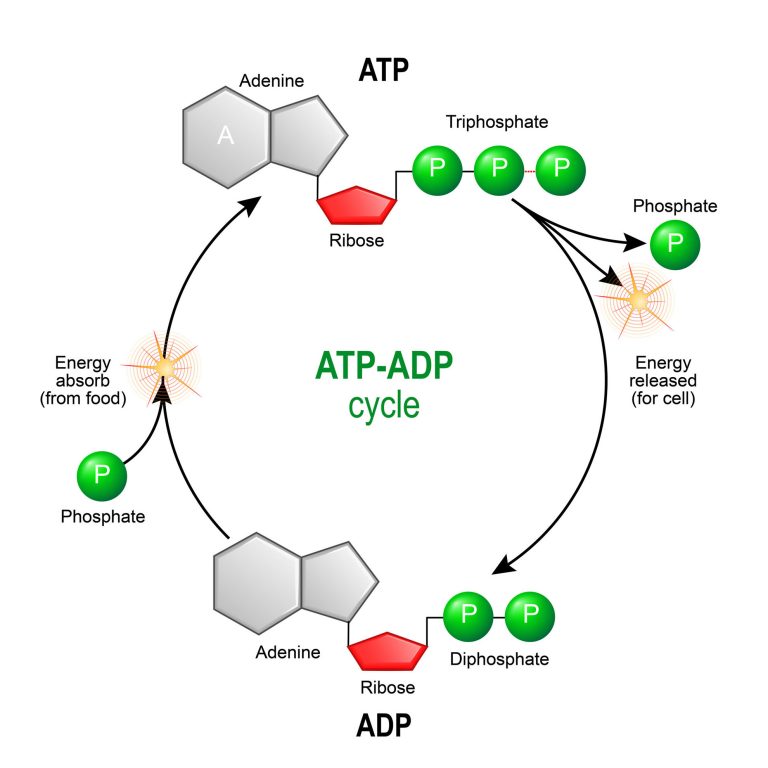
ATP-ADP cycle
Table of Contents
ATP stands for adenosine triphosphate, and is the energy used by an organism in its daily operations. It consists of an adenosine molecule and three inorganic phosphates. After a simple reaction breaking down ATP to ADP, the energy released from the breaking of a molecular bond is the energy we use to keep ourselves alive.
ATP to ADP – Energy Release
This is done by a simple process, in which one of the 2phosphate molecules is broken off, therefore reducing the ATP from 3 phosphates to 2, forming ADP (Adenosine Diphosphate after removing one of the phosphates {Pi}). This is commonly written as ADP + Pi.
When the bond connecting the phosphate is broken, energy is released.
While ATP is constantly being used up by the body in its biological processes, the energy supply can be bolstered by new sources of glucose being made available via eating food which is then broken down by the digestive system to smaller particles that can be utilized by the body.
On top of this, ADP is built back up into ATP so that it can be used again in its more energetic state. Although this conversion requires energy, the process produces a net gain in energy, meaning that more energy is available by re-using ADP+Pi back into ATP.
Glucose and ATP
Many ATP are needed every second by a cell, so ATP is created inside them due to the demand, and the fact that organisms like ourselves are made up of millions of cells.
Glucose, a sugar that is delivered via the bloodstream, is the product of the food you eat, and this is the molecule that is used to create ATP. Sweet foods provide a rich source of readily available glucose while other foods provide the materials needed to create glucose.
This glucose is broken down in a series of enzyme controlled steps that allow the release of energy to be used by the organism. This process is called respiration.
Respiration and the Creation of ATP
ATP is created via respiration in both animals and plants. The difference with plants is the fact they attain their food from elsewhere (see photosynthesis).
In essence, materials are harnessed to create ATP for biological processes. The energy can be created via cellular respiration. The process of respiration occurs in 3 steps (when oxygen is present):
- Glycolysis
- The Kreb’s Cycle
- The Cytochrome System
The following tutorial looks at the chemistry involved in respiration and the creation of ATP, and why oxygen is essential for respiration in the long term.
You will also like...
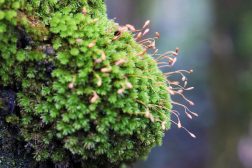
Meiosis and Alternation of Generations
Plants are characterized by having alternation of generations in their life cycles. This tutorial is a review of plant m..
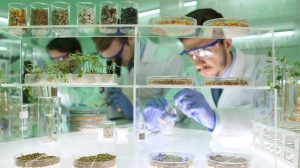
Regulation of Biological Systems
Regulation of Biological Systems tutorials are focused on the modulation of biological systems from cell to population l..
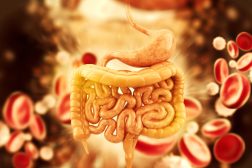
Human Biology – Food and Digestion
This tutorial recognizes the importance of food as a source of energy that will fuel many biological processes. A good d..

The Water Cycle
The water cycle (also referred to as the hydrological cycle) is a system of continuous transfer of water from the air, s..
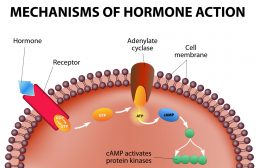
Homeostatic Mechanisms and Cellular Communication
Homeostasis is the relatively stable conditions of the internal environment that result from compensatory regulatory res..
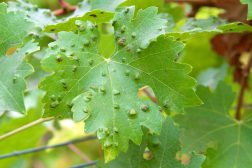
Plant Cell Defense
Plants protect themselves by releasing hydrogen peroxide to fight against fungal invasion. Another way is by secreting c..
